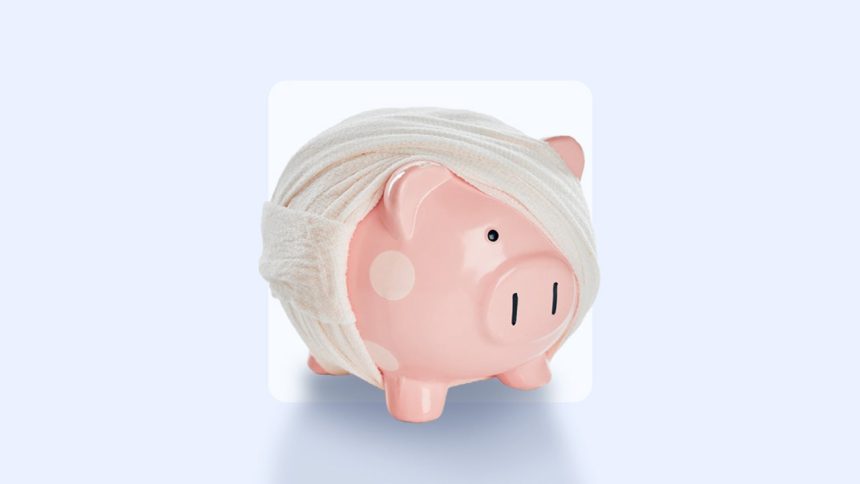Image by GettyImages; Illustration by Bankrate
Key takeaways
- Medical loans can help bridge the financial gap when insurance falls short.
- These loans typically offer lower interest rates than credit cards and feature a fixed rate and term.
- You can apply online and get the funds within days of approval.
- If you’re approved with poor credit, expect a higher interest rate, possibly as high as 35.99 percent.
Preventive care and emergency treatment are vital for your health. But if you can’t cover those expenses upfront, loans for medical procedures and related costs may help. This financing option can offer speedy access to funds, sometimes as soon as the next business day. But before you apply for a loan, it’s a good idea to understand the potential drawbacks.
What is a medical loan?
A medical loan is a type of personal loan used to finance medical treatment. Medical loans can cover various medical expenses, including elective surgeries, IVF treatments, emergency procedures and even less expensive treatments.
Most are unsecured loans, so you don’t have to use your home (or other asset) as collateral. But you’ll need good credit to secure the lowest rates.
If your credit score needs work, a secured medical loan may be an option. Secured medical loans often come with lower interest rates. However, if you fail to repay the debt, you stand to lose your collateral.
How do medical loans work?
You can typically prequalify for funding without damaging your credit score to compare loan offers. When you’re ready to formally apply for the loan, a credit check, salary verification and other information will be required.
If your loan is approved, the funding timeline varies by lender — some offer same-day funding, while others may take up to a week. Once you receive funds, you’ll make fixed monthly payments that include interest through the end of the loan term, which is typically one to seven years.
Where to get a medical loan
Medical loans are offered through banks, online lenders, credit unions and healthcare providers. When comparing medical financing options, don’t just look at the APRs — consider eligibility requirements, loan terms and fees.

The best personal loan rates of 2025
If you need to borrow money to cover medical expenses, consider Bankrate’s top picks for the best personal loans.
Learn more
Pros and cons of medical loans
Medical loans can be a good alternative to depleting emergency savings or increasing your credit card debt — if you qualify for a low rate. However, they aren’t the right choice for everyone.
Pros
- Predictable payments: Personal loans have fixed interest rates and repayment terms, so your bill won’t fluctuate. This makes it easy to budget for repayment.
- Fast funding: Most personal loans are disbursed in a few business days, providing you with much-needed funds right away.
- Less expensive than credit cards: Credit cards have an average interest rate of over 20 percent, compared to an average personal loan rate of just over 12 percent.
- Flexible use: The proceeds from personal loans can be used for any treatment or procedure.
Cons
- Interest required: Unlike credit cards, which sometimes come with 0 percent introductory APRs, you’ll always pay interest with a personal loan.
- Costly for bad credit borrowers: If you have imperfect credit, you could end up with an APR as high as 36 percent, plus fees.
- Limited amounts: Personal loans typically range from $1,000 to $50,000, which may be insufficient for costly procedures.
Who are medical loans best for?
Medical loans may be a good option for borrowers with a solid credit score (700 or above) who can qualify for the most favorable interest rates and terms. A loan may also be a good option for those who want to use the funds for various expenses, including travel or other costs associated with treatment and recovery.
If you don’t have adequate insurance or sufficient financial reserves, but you need treatment immediately, you may also want to consider a loan. “When facing a possible life-threatening condition, certainly it is better to take out the loan rather than to make another appointment for some other time,” says Michael Sullivan, director of education at Take Charge America.
How to apply for a medical loan
If you’ve determined that a medical loan is right for your situation, take these steps:
- Decide how much you want to borrow. The first step in any loan application process is determining how much you need and what you can comfortably afford to repay. Use a loan calculator to run the numbers.
- Check your credit. Loan terms and interest rates are determined by your credit history and score. Reviewing your credit report and correcting any mistakes you find is a good idea, as it can help you access more competitive loan offers. Your credit reports won’t contain your credit score, but your bank or credit card issuer may provide free access — or you can check your score with one of the credit bureaus for a fee. If your credit is poor, you can focus on searching for lenders who offer bad credit loans.
- Get prequalified. Get quotes from multiple lenders without impacting your credit. Compare these offers to identify lenders with the most favorable terms and competitive rates.
- Select a lender and complete the application. The final step is to apply with your chosen lender. Be sure to provide the requested documents to verify your employment and income information.
If your loan is approved, the lender will deposit funds directly into your account. Some lenders can disburse funds the same day you’re approved, while others take a few business days.
Alternatives to medical loans
For some, medical loans aren’t the right choice due to time constraints or credit requirements. Fortunately, there are alternatives, including:
- Payment plans: Some medical offices offer interest-free payment plans. Speak to your doctor before resorting to other forms of credit, as a payment plan might be a more affordable option.
- Hospital-provided financial assistance: Depending on your situation, you may qualify for financial assistance. Speak to the hospital’s billing department about payment plans or financial assistance options.
- Crowdfunding: Some options for soliciting donations include CoFund Health, GoFundMe and PlumFund. Most sites charge a small processing fee, and you can stop accepting donations anytime.
- Credit cards: If you’re financing an inexpensive procedure and have good credit, a credit card with an introductory zero-interest offer could be a good option. You can also look into medical credit cards, but keep in mind that interest rates can be higher than other credit cards.
Bottom line
Many Americans decide to delay medical treatment due to cost. But medical loans exist for a reason — they can help you access the care you need. A personal loan can be a great option if you have good credit and can repay the debt, but it isn’t the right move for everyone.
Consider the pros and cons before applying for funding. If you decide a medical loan is a good fit, compare rates, terms and fees from a few lenders to get the best deal.
Read the full article here














